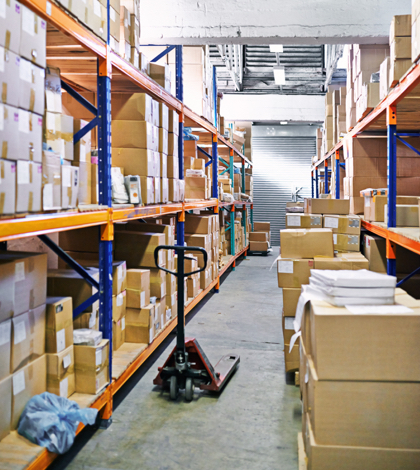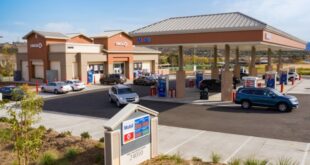Whether it stays as hot as it’s been the past two years remains to be seen, but the IE figures to keep getting more than its share of logistics development during the upcoming year.
The Inland Empire industrial market absolutely sizzled during 2017.
During the third quarter, the most recent data available, industrial vacancy in Riverside and San Bernardino counties was three percent, down 70 base points from the start of the year, according to CBRE Group Inc.
Also during the third quarter, 6.4 million square feet of industrial space was absorbed, 27.6 million square feet was under construction and average lease rates were a very affordable 53 cents per square foot.
Quarterly reports are generally straight-forward and lacking in hyperbole, but in CBRE’s most recently assessment of the Inland Empire’s industrial market, the enthusiasm practically jumps off the page.
The five-page report compares the market to “a rocket hurtling through space,” and notes that, despite record construction, the Inland region’s industrial vacancy rate was at an all-time low during the third quarter.
It also notes that the market’s fundamentals are as healthy as they’ve ever been, and that concessions from landlords – a month of two free rent, for example – are gone unless they’re attached to a premium rent rate.
Overall, the report says, the Inland industrial market continues to exceed expectations.
“It’s a very sold market,” said Jason Chao, a senior vice president and industrial specialist with CBRE Ontario. “I don’t see why we can’t be as good in 2018 as we were in 2016 and 2017.”
Perhaps most impressive of all, of the 12.4 million square feet of industrial space that was completed during the third quarter, more than 3.7 million square feet was pre-leased, a sign that logistics businesses have confidence in the market.
“The emergence of the e-commerce boom, starting in 2013, has made the Inland Empire a veritable paradise for all industrial users,” the report noted.
So, as 2017 winds down, the question is whether the industrial market can begin to match its performance in 2018, to whether it will lag at some point.
“It has to slow down – anyone who has been in this business for any length of time knows that – but no one knows when that will be,” said Chuck Belden, executive vice president with Cushman & Wakefield Ontario. “No one can see where the black swan is.”
At the moment, there doesn’t appear to be one. The economy is strong, unemployment is down and consumer confidence is up, although that could change quickly.
In the Inland Empire, demand for industrial space is up and lease rates have risen at a rate of about five to eight percent since the current economic recovery began.
Locally, e-commerce is driving much of the demand for industrial space. Amazon, the largest e-commerce retailer in the world, operates six fulfillment centers in the two-county region and has two more planned, one in Eastvale that will cover one million square feet and a 750,000-square-foot facility in Riverside.
“All of the demographics are good,” said Belden, who specializes in “big-box’ industrial projects, generally defined as anything 500,000 square feet and larger. “People are spending money, and that keeps demand up.”
As long as those demographics stay strong – and for now they show no signs of slipping – the industrial market should remain solid, said Alexey Zabolotskikh, vice president with Lee & Associates Commercial Real Estate Services Riverside.
“All the indicators are pointing in the right direction, and demand for space is staying up, which means that 2018 should be a strong year,” Zabolotskikh, said. “The economy is as strong as it’s been since 2006 and 2007.”
As Belden noted – and CBRE’s quarterly report concurred – e-commerce will continue to drive much of the Inland Empire’s industrial market during 2018, as more and more retailers look to build warehouse-distribution facilities that will deliver goods quickly, often on the day they’re ordered.
“Buildings in the 500,000 square foot range will continue to drive the market, but beyond that things might slow down a little,” Zabolotskikh said. “The big retailers like Amazon and Target are looking for space for buildings that size in the Inland Empire, but it’s getting harder to find, especially on the west side.”
One result of the e-commerce boom is a concept known as “the last mile,” which refers to getting an item to whoever ordered it.
To remain competitive, any industrial market will have to have “last mile” facilities, and that’s where the Inland Empire might be disadvantage. Some have speculated that Los Angeles might start getting more logistics facilities, because being closer to the ports will accommodate quicker deliveries.
Belden, however, is skeptical, that “last mile” will hurt the Inland region in 2018, if ever.
“I don’t see it as a threat at all,” he said. “If anything I think the two markets might compliment each other. I could see a situation where [goods] would be shipped to the Inland Empire, then back to Los Angeles, before they get delivered.”
 IE Business Daily Business news for the Inland Empire.
IE Business Daily Business news for the Inland Empire.


